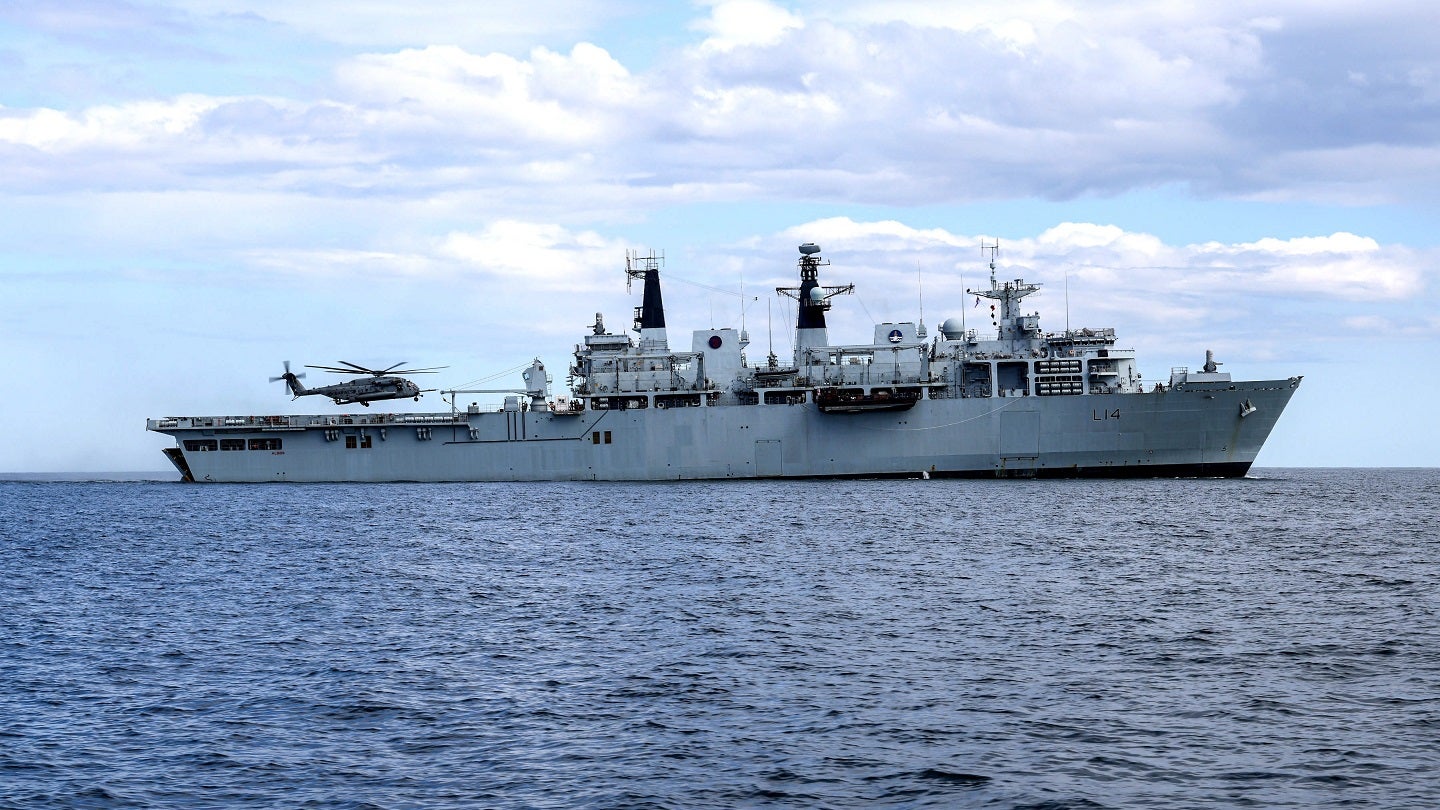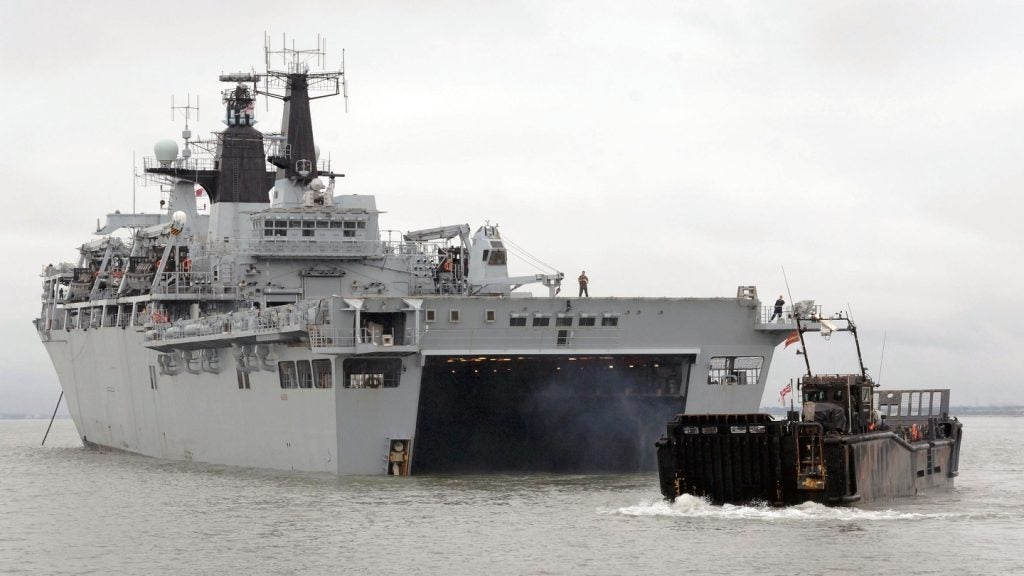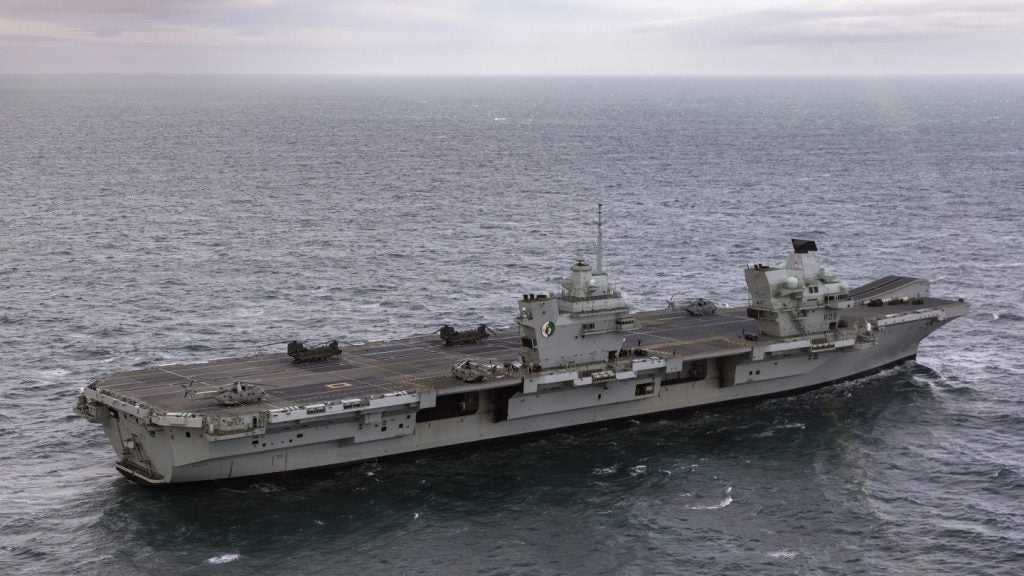
The future of the Royal Navy’s amphibious assaults ships HMS Bulwark and HMS Albion remains uncertain, amid reports that the vessels could be axed as the service struggles with manpower issues and recruitment.
Recent media reports have stated that both Albion-class amphibious assault ships – technically classified as Landing Platform Docks (LPDs) – could face the chop in order to alleviate personnel difficulties in the Royal Navy. Able to accommodate hundreds of soldiers or Royal Marines, the vessels can launch and recover amphibious assaults from an extensive rear well deck and two-spot helicopter deck.
However, senior UK Government officials were unable to provide any clarity as to the fate of the Albion class when queried in the House of Commons on 8 January 2024, offering the possibility that the vessels could decommissioned years ahead of schedule.
The House also heard that intake to replace sailors leaving the Royal Navy had dropped 22.1% in the year up to 22 March 2023.
Defence Procurement Minister James Cartlidge stated that “no final decision” had been taken on HMS Albion and HMS Bulwark, admitting that there were “recruitment challenges”.
The fact that no decision has been taken on whether to retain Albion and Bulwark indicates that discussions regarding their future have taken place, with the prospect that the departure from service of such role-specific vessels could leave a gaping hole in the UK’s ability to project maritime power. This uncertainty is in marked contrast to comment made in late 2023 regarding the future of the class.
How well do you really know your competitors?
Access the most comprehensive Company Profiles on the market, powered by GlobalData. Save hours of research. Gain competitive edge.

Thank you!
Your download email will arrive shortly
Not ready to buy yet? Download a free sample
We are confident about the unique quality of our Company Profiles. However, we want you to make the most beneficial decision for your business, so we offer a free sample that you can download by submitting the below form
By GlobalDataJames Heappey, Minister of State for the Armed Forces, stated in a written parliamentary response HMS Bulwark was “undertaking scheduled maintenance”, after which it would transition into regeneration to replace HMS Albion, which itself would enter extended readiness later in 2023.
“Until the operational return of the Albion-class Landing Platform Dock (LPD) ships, the Royal Navy will continue to operate a credible LPD capability through its Bay-class Landing Ship Dock (Auxiliary) (LSD(A)),” said Heappey.
“The LPD and LSD(A) platforms have interchangeable functionality; each complements the other and together they constitute our core amphibious delivery capability. To enable the sustained forward presence of the Littoral Response Groups (LRG) in the coming years, both classes of ship will be pulsed into the deployment of the LRGs around their respective refit cycles,” Heappey added.

Given these comments, any removal of the Albion class from service could impact the ability of the Royal Navy to sustain a forward-based amphibious presence.
Earlier parliamentary written response from UK defence officials stated that the extended readiness period of HMS Albion would run for “approximately six years”, which aligned with the UK Ministry of Defence’s position to have a single LPD at operational readiness.
In September last year, Cartlidge stated that, on current plans, HMS Albion and HMS Bulwark would retire from service by the end of 2034.
“Vital… not simply nice to have”
Built at the BAE Systems Marine dockyard at Barrow-in-Furness, Cumbria, HMS Albion and HMS Bulwark were commissioned into service in 2003 and 2004 respectively. The capabilities of the Albion-class LPDs include an ability to embark 300 assault troops, or up to 650 for short periods, or Challenger 2 main battle tanks and other armoured vehicles.
In addition, eight landing craft (a mixture of LCU Mk 10 and LCVP Mk 5) can be embarked within the welldeck, which are then able to carry troops, armoured vehicles, or equipment from the vessel to a beachhead, a critical capability known as a ship-to-shore connector.
However, the vessels are also personnel heavy, with the platform held service ready needing more than 300 crew to operate the ship. The vessel kept at extended readiness typically requires just a handful of crew on rotation, but the recent introduction into service of the two Queen Elizabeth-class aircraft carriers and their 700-person crew has proven to be a strain on personnel numbers in the Royal Navy.
Should the Albion class be decommissioned, it would be expected that the three Bay-class LPDs and, to a lesser extent, the Queen Elizabeth-class carriers, would form the principal elements of the Royal Navy’s amphibious assault capability. However, the Bay class, while capable auxiliaries, fall far short of the naval standards required to act as a command-and-control platform for an amphibious task force, as well as having a far reduced load capacity.
The Queen Elizabeth-class carriers have no welldeck, unlike the US Navy’s America-class vessels, and thus are unable to operate LCUs acting as maritime ship-to-shore connectors. Instead, the class would deliver troops – but no armour – via medium and heavy rotary lift.

Such tactics would also require the carriers to operate close to shore, well within range of potential missile threats. The Queen Elizabeth carriers are lightly armed, with just a handful of Phalanx close in weapon systems and no surface-to-air missile capability for ship defence.
In written evidence submitted by retired Royal Navy Commodore Michael Clapp and Rear Admiral Jeremy Larken to the UK Parliament in 2017, into earlier considerations on the decommissioning of Bulwark and Albion, the former serving officers stated that “deleting” the Albion class capability in favour of a utilising the Bay and Queen Elizabeth classes “would seriously degrade” the UK’s amphibious warfare capability and raise operational risks.
“We believe it is a vital operational capability for the UK armed forces, and not simply something nice to have,” wrote Clapp and Larken at the time. “We would also note that this is a capability with a global reach, not dependent on ports or airfields or rights of overflight.”





